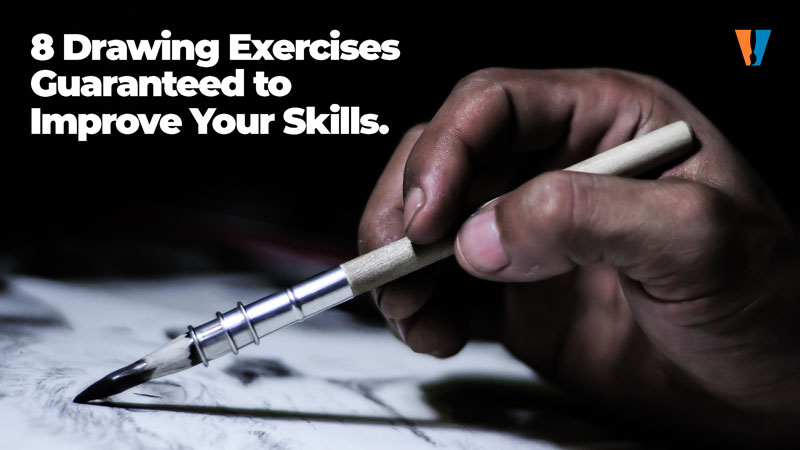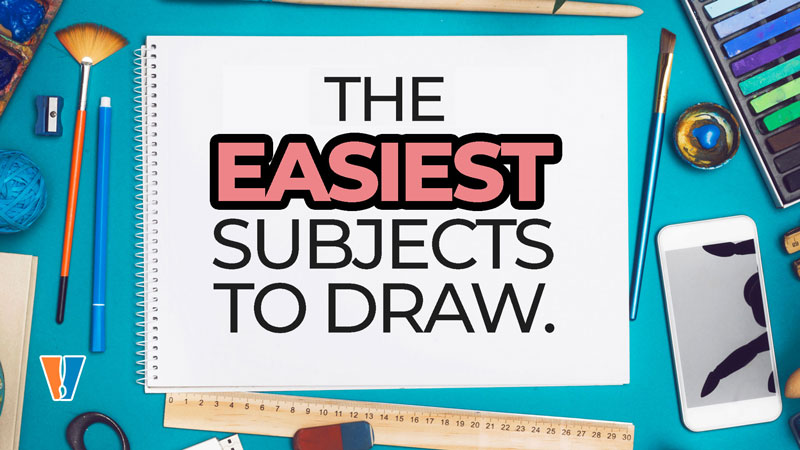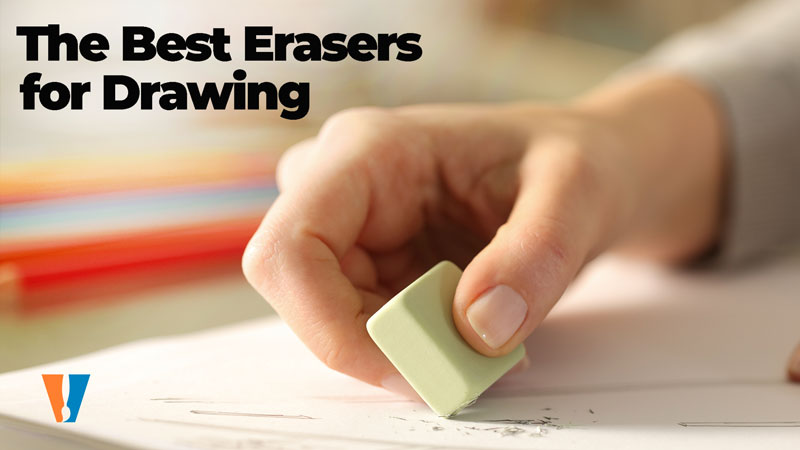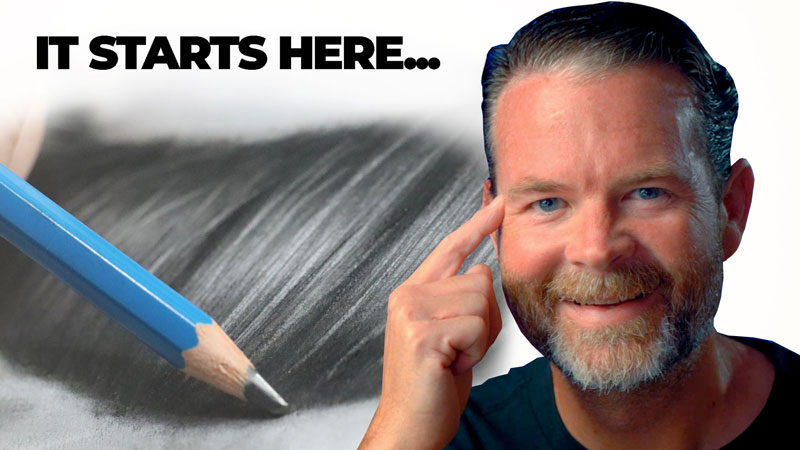How to Get Better at Drawing
Drawing got you frustrated? You’re not alone. Any new skill is a challenge to learn and develop, but the good news is that any skill – including the skill of drawing, can be mastered by anyone. In this lesson, we’ll look at 6 basic principles that will help you get better at drawing plus a bonus tip. Let’s dive in…
Principle #1 – Practice Daily – Make Drawing a Habit
Developing any skill requires practice. The more that time that you devote to practice, the faster you’ll see results. This seems pretty simple, but the fact is our practice needs to be focused practice. Just doodling in your sketchbook will not get the results that you want.
We need to practice with a goal in mind. This means that you need to draw with a purpose. If you are struggling with values, practice drawing subjects with a value scale as a reference and ensure that you use every value in your sketch. If you’re struggling with textures, practice drawing various different textures and make notes on how you accomplished the illusion.
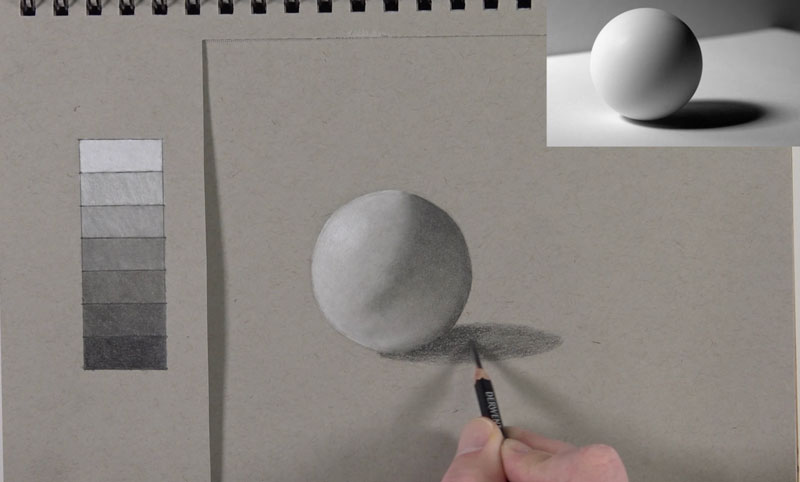
If you want to get better at figure drawing, practice drawing figures from life – at the park or from reference photos. You get the idea – practice every day – but make sure that practice is something that can be measured and not just mindless doodling.
Principle #2 – Draw Simple and Difficult Subjects
When choosing subjects to draw – don’t get stuck drawing the same subjects over and over again. Diversify what you practice. Simple, everyday objects make great subjects for practice in your sketchbook, but don’t be afraid to try challenging subjects as well. Don’t fall into the trap of reserving more difficult subjects for “when you get better”. Draw the difficult subjects along with the easier ones.

Often, when we challenge ourselves, we improve faster. Lifting heavier weights in the gym, make us stronger – faster. But those lighter weights help to build tone. So both the heavier weights and the lighter ones are important. With drawing, draw both easy subjects and more difficult ones consistently to see noticeable improvement in your drawing skills.
Principle #3 – Take the Time to Learn
You don’t know what you don’t know. If you don’t take the time to learn techniques or basic foundational principles, then developing the skill of drawing will take longer to achieve. Teachers and experts have spent countless hours learning and developing. Along the way, they have acquired knowledge that they share with students. This knowledge can be passed on to you, saving you those countless hours in experimentation. Take advantage of this.
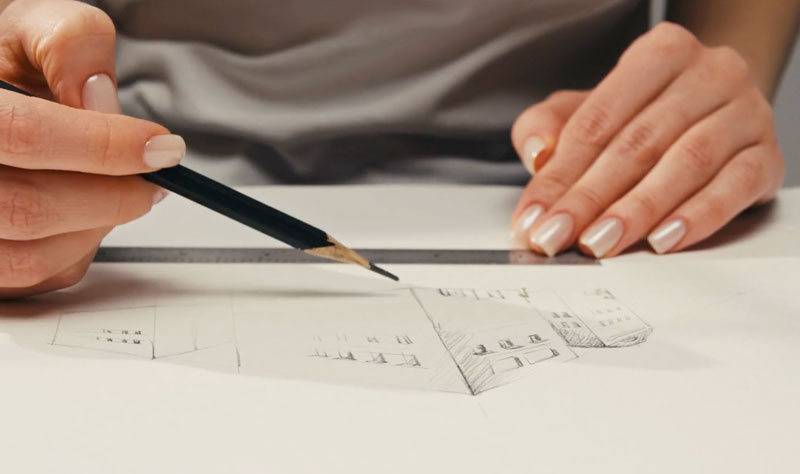
Take structured classes – online or in person – instead of just watching countless YouTube videos. While these videos may be great for inspiration, without an ordered and structured approach to teaching, you’re only getting random pieces of the puzzle. Online classes or in person classes are mostly taught in a progression, ensuring that the information that you receive builds on what you’ve learned. You get the whole puzzle with all of the pieces and a plan for how to put it all together. And if you don’t want to invest in a course or a class, then learning how to draw really just isn’t that important to you.
The Virtual Instructor offers a ton of classes for drawing – View Our Library of Courses and Classes
Principle #4 – Draw From Life or Photos – Not From Other Drawings
It can be tempting to draw from other people’s drawings – especially simple cartoons. But this is somewhat a trap to your development as an artist. While it’s encouraged to study other people’s drawings, I wouldn’t recommend copying them. The artist has already interpreted the subject through their eyes with their hand.
It’s better to draw from your own photo references or better – from life. This forces you to make the decisions and for you to interpret the subject in your own way and then make marks with your own hand. Although it may be gratifying to finish a drawing of your favorite anime character, it doesn’t help you get better at developing your drawing skill – you’re just get better at copying someone else’s style.
Principle #5 – Explore Different Drawing Mediums
When most of us get serious about drawing, our tool of choice is usually a graphite pencil. It’s a comfortable choice since its so familiar to us. But the world of drawing features many mediums, and graphite is not your only choice. Colored pencils, charcoal, pastels, and pen and ink all have their own unique characteristics.
Some artists gravitate to ink and its ability to communicate through line. Others prefer charcoal for its forgiveness and rich blacks. Some prefer colored pencils for its ability to develop precise details. But if you’re just using a graphite pencil, you may be missing out on a medium that suits you better.

Try different mediums without judging the results. Learn how these mediums work and practice with them. I didn’t use pastels until I was in college – now its one of my favorite mediums. I missed out on years of development because I didn’t know what I didn’t know. Don’t be afraid to try new things – don’t let fear of failure stop you from experiencing all that’s available to you.
Principle #6 – Stop Comparing Yourself to Others
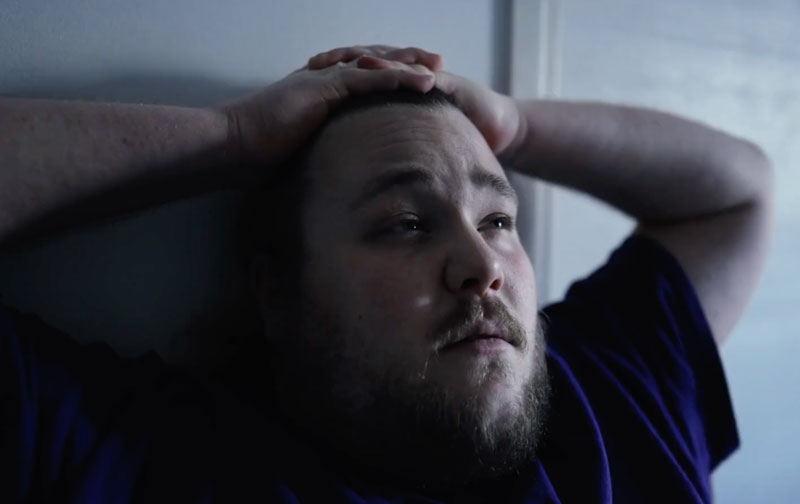
In today’s age with social media and the internet, a countless number of incredible artworks are shoved in our faces everyday. My instagram feed is filled with stunning works of art that seem endless. It’s easy to get overwhelmed and feel deflated when we compare ourselves to these artists. We may tell ourselves, “I’ll never be that good, why bother.” This is a trap! Don’t fall for it.
See also: Dealing with Artistic Frustration
You are on your own art journey and we travel that journey at different paces. Focus on your own development and not on what others have done. When we compare ourselves to others, we never win. But when we compare ourselves to ourselves, then we can see how far we’ve come. There will always be someone better than you at drawing – but this is not where we find gratification from making art. Drawing isn’t a sport – there isn’t a champion.
There is merit in everything you create. Your journey is yours alone. Stay focused on this and you’ll continue to practice and improve. If you let doubt creep in, your art materials will start to get dusty because you’ll stop using them.
Bonus Principle – Drawing Well Doesn’t Require Talent
We’ve all been conditioned to believe that skills are talents. They’re not. Skills are learned. Drawing is a skill – not a talent. Some of us acquire these skills quicker than others. Some of us are programmed to develop faster than others. But all of us can learn any skill that we wish. It simply requires desire, knowledge and practice.
See also: The #1 Secret to Drawing
If you think it requires talent, then you’re doomed to fail from the start. Once you encounter a challenge, you’ll blame your lack of talent for your failure. Eventually, you’ll give up – believing that you are lacking talent. This belief is stopping countless numbers of people from living their life to the fullest. If drawing well is your desire, then it is attainable. It won’t happen overnight – but talent is not required and it shouldn’t hold you back from what is possible.
If so, join over 36,000 others that receive our newsletter with new drawing and painting lessons. Plus, check out three of our course videos and ebooks for free.

